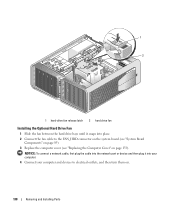The T2885 was a desktop computer released by eMachines in 2003. The system board for this computer was the Intel D845GVSR Seabreeze Motherboard. The D845GVSR Motherboard has been discontinued by Intel. Replacements and upgrades are available from many online vendors. The T2885 is no longer available from eMachines, but it can be purchased used online.
Alienware User Support: XPS 720 ATX MOD. I fell in love with these cases when they first came out. So I finally decided to pick one up on eBay. The XPS 700, 710 and 720 were built to house a BTX motherboard. It mounts on the right side panel instead of the left like everything else. The XPS 730 was the last of this style of case and housed an. The Dell XPS 720 impressed critics with its factory overclocked Intel Dual and Quad-Core Extreme processors, and Direct X 10 support. Now, Dell is pushing their systems even further with the.
Xps 720: btx to atx I loved the 720 case the second i saw on on dell.com a year ago. Well when it came time to build my own compuer, i decided to use that case. Hey guys, as some of you may know, there is a thread floating around where The single most amazing skilled modder decided to convert the dell xps 720 case from btx to atx. It inspired me to do the same. I thought I would start my own thread and get input from you guys.
Processors
The D845GVSR system board supported Intel Pentium 4 processors with 400 MHz or 533 MHz front side bus (FSB) speeds. The board also supported Intel Celeron Processors with FSB speed of 400 MHz. The socket type for the processors was mPGA478. According to eMachines, the T2885 came with the 2.8 GHz Intel Celeron Processor with 400 MHz FSB speed.

Chipset
The D845GVSR motherboard came with the Intel 845GV chipset. Three components of the 845GV chipset were: Intel 82801DB Input/ Output Controller Hub (ICH4), Intel 82845GV Graphics and Memory Controller Hub (GMCH) and a four megabit Firmware Hub (FWH).
Memory
Two slots for system RAM were located on the D845GVSR main board. The RAM slots supported 184-pin DDR SDRAM modules. The RAM speeds supported by this motherboard were DDR 333 (PC-2700), DDR 266 (PC-2100) or DDR 200 (PC-1600). The maximum supportable RAM for this system board was two 1 GB modules for a total of 2 GB of RAM. According to eMachines, the T2885 came with 512 MB of PC-2100 RAM.
Video/Audio
The on-board video card for the D845GVSR system board was the Intel Extreme Graphics Controller. This video card included 64 MB of dynamic graphics memory. The integrated audio for this motherboard was an two-channel audio subsystem for AC '97 with Realtek ALC202A codec. Audio interfaces included: ATAPI-type connectors for auxiliary line in and CD-ROM; front panel connectors for line out and microphone in; and back panel connectors for line in, line out and microphone in.
Input/Output Controller
The D845GVSR main board came with either a National Semiconductor PC87372 or an SMSC LPC47m172 Bus I/O Controller.
Interfaces
This system board included many ports, including: one parallel port, one serial port, six USB ports (two front and four rear), one 1.44 MB or 2.88 MB floppy disk drive interface and two IDE device interfaces with ATA-66, ATA-100 or Ultra DMA 33 support. PS/2-type mouse and keyboard ports, three fan connectors and one VGA monitor port were also included.
CMOS Battery
The system clock and CMOS memory for the D845GVSR board were powered by a 3.3-volt lithium coin cell battery (CR2032). The battery had a standby life of three years, which was extended by AC power to the computer. The system clock was accurate to within 13 minutes per year. The operational temperature of the clock was 25 degrees Celsius (77 degrees Fahrenheit).

Expansion
The D845GVSR motherboard had three PCI bus card connectors. These slots were available for user upgrades.
BIOS
The BIOS (basic input output system) for this board was Intel/AMI BIOS, which was located on the four megabit FWH. The Intel/AMI BIOS supported Plug and Play, SMBIOS and Advanced Configuration and Power Interface (ACPI).

Xps 720 Motherboard
Form Factor
The Intel D845GVSR Seabreeze Motherboard was a MicroATX form factor system board. The dimension were 9.2 inches by 8.2 inches (233.68 millimeters by 208.28 millimeters).
Tags: system board, came with, 845GV chipset, According eMachines, According eMachines T2885, available from, board IntelXps 720 Atx Modalienware User Support Tool

It all started back in 2010 when I purchased a Dell XPS 720 on eBay as a Spares or Repair project.
The first challenge was getting inside the case. Unfortunately for me, part of the locking mechanism broke away from the side cover and the handle was jammed. I was able to craft a very crude curved hook that was thin enough to get inside but long enough to slide the plastic latches backwards. The Dell service manuals and looking at other peoples pictures made it a lot easier to imagine what I needed to do to get the lock to open. This was all done using a flashlight and some basic tools.
Once I finally cracked open this behemoth, I began checking all the basic components and plugged it in. Although this mega machines mighty fans roared into life, all I got was an Amber power light. I swapped components with other devices and used a PCI diagnostics card to help troubleshoot the system.
Eventually I diagnosed the problem to be the Motherboard. Adding to this, Dell have adopted the BTX form factor over ATX making it impossible to put an after market motherboard in.
After some extensive searching I found a refurbished XPS 720 motherboard on eBay. Despite my best efforts it unfortunately greeted me with the same yellow amber light, so I looked for some expert help:
http://www.techsupportforum.com/forums/f15/xps-720-solid-amber-no-post-491717.html
The users on here tried helping with my diagnostics and concluded either the powersupply or motherboard. We already tried testing the secondary 20 pin power rail using a multimeter. I decided to eliminate the powersupply and purchased an XPS 720 powersupply. This didn't fix my problem and I was stumped.
After more diagnostics and some more Googling around, it became clear that this is a common fault with no fix. I tried another technique which worked in the past for my Dell XPS M1710 laptop graphics card. This was when nVidia went though a series of bad models.
The idea was to heat the board up in the oven which would allow the solder balls on the chips to melt and re-solidify (referred to as a BGA reflow). This seals any micro fractures caused by the constant heating up and cooling down electronic components go through. It isn't a permanent fix and is yet again another ticking time bomb. The only permanent fix for this is to reball the chips which is typically done using a bga rework station but also requires having the right stensils for the solder pad patterns. It requires a steady hand and is not for the faint hearted.
As you can guess this didn't go according to plan because all the capacitors leaked and the liquid burnt, but I still found it a fun experiment to try. I dare not try power it up.
For me there was only one way I was going to bring some life back into this behemoth, convert it to ATX.
